
Conquering Combined Events: A Guide for Athletes
BY HARRY KENDALL
In athletics, combined events and sports as a whole, it can be beneficial to stay out of your own head and not get too wrapped up or immersed in your emotions. For this reason alone, I’m going to do a deep dive into my own head to show you my thought processes during an entire combined events competition, including some of the buildup and the fallout from the performance. Without further ado, let's dive right in.
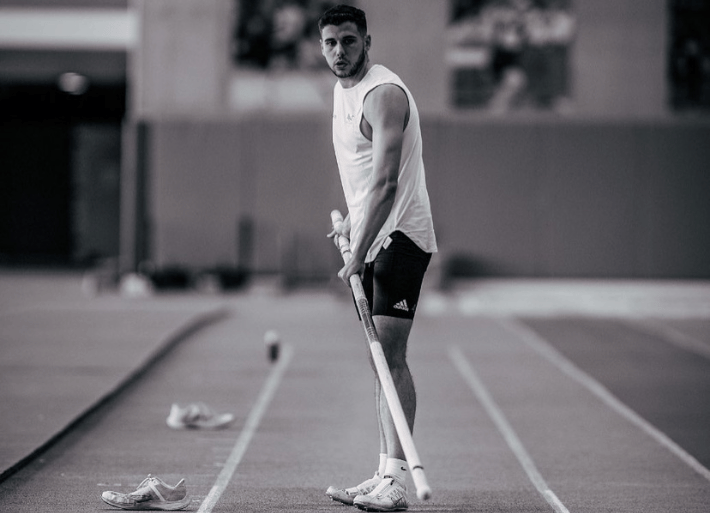
Making an effective pre-performance routine
The night before the competition, right before I sleep, I run through the entire event in my head, step by step, and visualise the cues I need to focus on whilst competing. I do this to envision a near-perfect competition, as a final reinforcement for my mind and body, and to ingrain motor patterns subconsciously.
On the morning of a combined events competition, I wake up well in advance to fully prepare and feel awake for the first event. After a shower and a quick stretch, I’ll head to breakfast, where I usually eat parts of a full English, sausage, egg, beans, some fruit and several cups of tea. I try to hydrate early in the day to help clear up my thought processes, and following breakfast, I’ll change into my competition kit and head to the track. It may seem obvious but don’t forget to register when you get to the track. You don’t want to be scrabbling around trying to get your numbers right before you’re about to run.
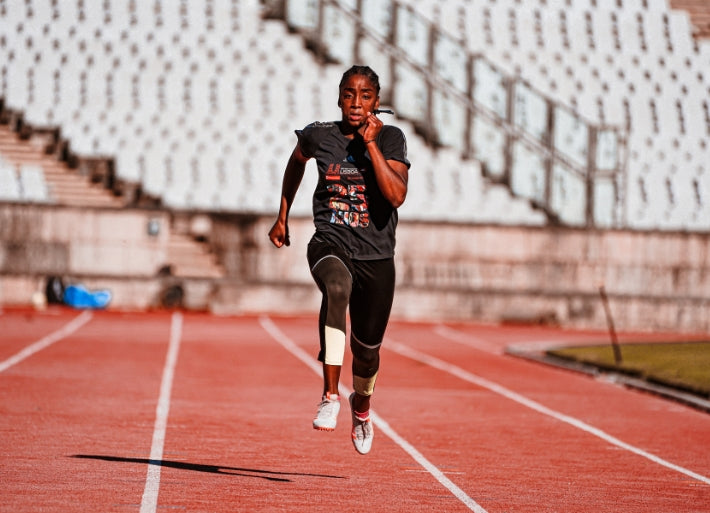
Warm ups before sprinting
The first event of the indoor heptathlon (the competition we’ll be focussing on today) is the 60m, a flat-out sprint requiring you to be as sharp and fast as possible. A full sprint warm-up is very important to set you up for the first event and the rest of the day. For me, this includes drills such as...
- A-skips
- B-skips
- Straight leg runs
- Fast hip switches

Why hydration is important for athletes
Whilst you’re warming up, staying hydrated is vital, as it can be an issue if you get too warm and start to feel sluggish. After my activation drills and some light stretching, I like to do 2 or 3 drive-outs from blocks to cement my angles and reactivity, and then it’s time for the competition to start.

My mental mindset for athletics competitions
At the beginning...
Going through my head on the start line for the 60m, I am mainly just listening for the gun. This might seem like an obvious cue, but actively listening for the stimulus of the gun has helped me get good reactions consistently through my competitions. After the initial reaction, I trust my running ability and stay as relaxed as possible.
The nerves for the day usually go out of the window after the first event, but whether my performance is good or bad, I try not to dwell on it for long, as it could affect my other performances. I’ll give myself 5 minutes to reflect on the performance before moving on to the long jump.
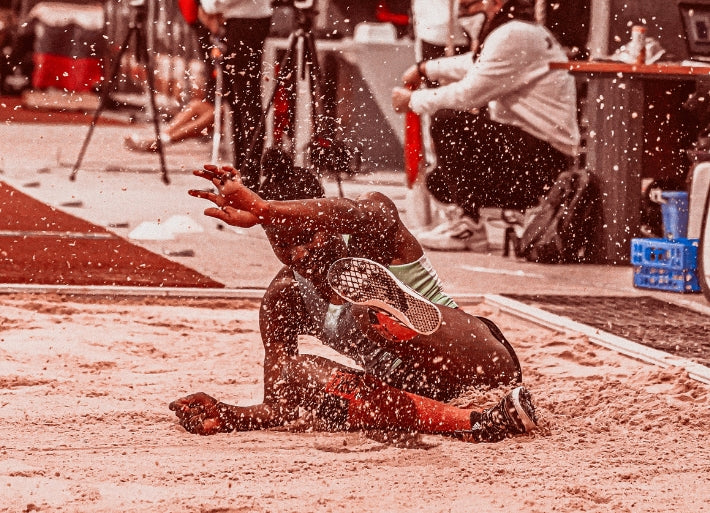
Long jump drills
As you will already be warm from the first event, a full warm-up is not required here. Personally, I like to do some plyometric drills such as skips, gallops and hops to get my body used to being springy and ready to jump.
For the competition warm-up time, I’ll do two full approach run-ups with just a tip-off at the end to check my foot placing on the board and then one pop-up jump to ingrain the take-off and landing elements. Through the competition, I try to focus on staying relaxed on the runway and then aggressive into the take-off, and let the flight mechanics practised in training take it from there.
I follow the same strategy post-long jump as I do post 60m, where I have 5 minutes to dwell on the competition before focusing on the shot put.
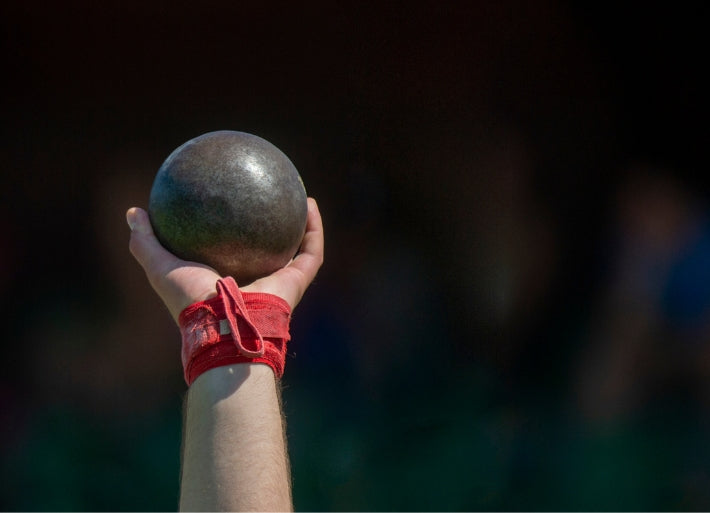
Getting stronger for shot put
I find that pre-shot put is an ideal time to take on some food and have a light lunch, usually just a sandwich for myself. This will help sustain you for the rest of the day without leaving you sluggish from overeating.
For the shot put, however, this requires a slightly different activation to the other events, as you are utilising more of your upper body systems. Some banded exercises to mobilise the chest, shoulders, and rotator cuff can be beneficial to help it move faster when pushing the shot put. My cues for the Shot Put are always to feel long on the push and drive my legs forward as fast as possible to help the velocity of the implement. Many athletes focus instead on hammering shots as hard as possible with the upper body. Plenty of chalk is also advised for the indoors, not only for grip but also for making a mark on the floor, as too many times I have seen officials mark the wrong spot due to a lack of imprint on the surface.
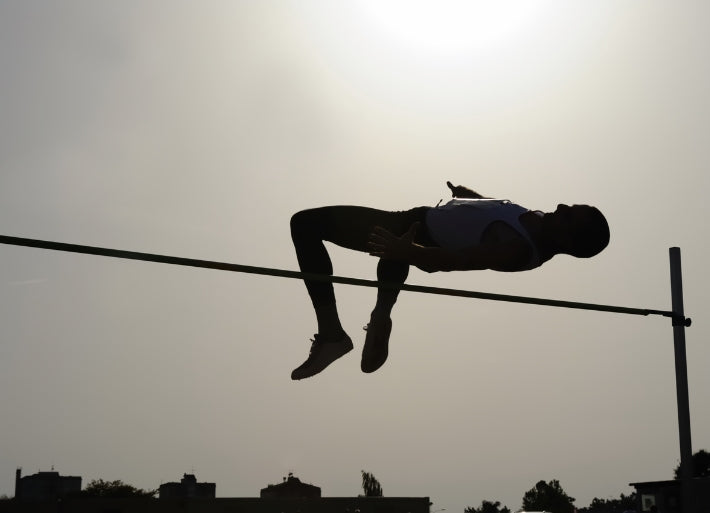
How to prepare for the high jump
The final event of day one is the High Jump, a power event in which you may not be feeling your freshest by this point.
I recommend more plyometric exercises for your warm-up here to help your body adjust to the positions you will be hitting during your run-up and take-off. My high jump warm-up onto the bed generally consists of a run-up check around the curve, and the 3 or 4 jumps of increasing height, to aid my decision in starting height and any cues I need to focus on in the competition. During the competition, don’t be afraid to adjust your run up as the event progresses, as on the higher heights, you may need more speed or time before the bar to gain the elevation required.

Recovery protocol for multi-events
After you’ve concluded the first day, it is essential to prioritise your recovery quickly.
I usually start with an ice bath (if it's available) to stave off any inflammation, followed by a hot shower to clean myself up and relax my muscles. After this, I’ll continue with some light stretching and head to dinner for a big meal to refuel and replenish all the energy stores which have been drained throughout the day. A good night’s sleep is also essential to help your body recover. Luckily, this is not usually an issue due to the fatigue accumulated throughout the day.
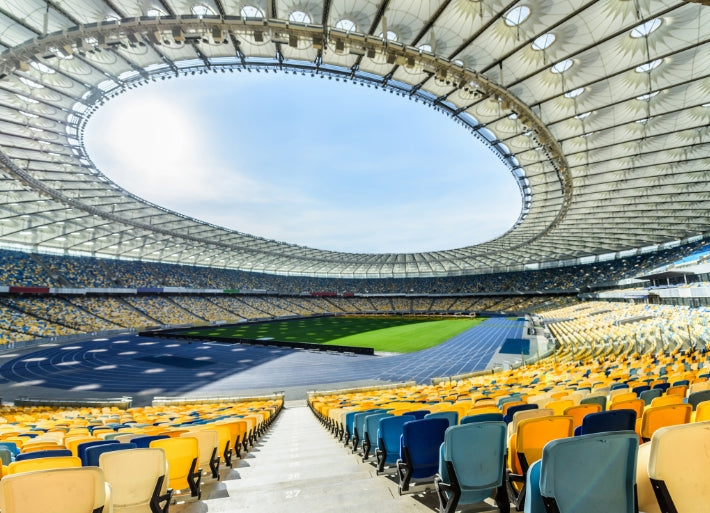
Combined events: day 2
The final leg of the race
Waking up on day 2 is probably the trickiest part of the competition, as aches and pains you didn’t realise you had will reveal themselves. I start the day the same way as day 1, with a long shower and a big breakfast for fuel, and then some gentle stretching and movement to potentiate my body for my warm-up. You’ll most likely feel that hauling yourself over high hurdles is a somewhat unachievable task; so it is very important to deliver the most effective warm-up possible.
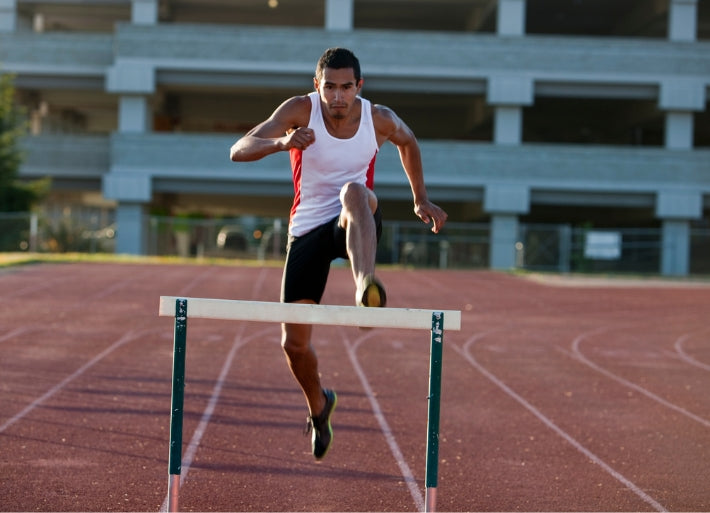
Exercises for hurdles
I start with general running drills and activation to get ready for the sprinting side of the race, as well as trigger-pointing the parts of my body that may be a little sorer due to the exertions that will be encountered. Following my sprint warm up, I’m straight into walkover drills and slower hurdle runs to get my body used to the shapes it needs to be hitting over the barriers. One or two runs out of blocks follow before the race, only when my body is ready for the intensity I need to bring over the hurdles, however, as it is easy to feel a few niggles if you haven’t prepared yourself. As for the race itself, my thought process is to be aggressive to the first hurdle and then smooth and fast between the barriers.

Preparing for pole vault
Once the hurdles have been completed, it is time to warm up for the pole vault. This event can be tricky timing-wise, as you can often wait a long time to come in for your first jump if you are one of the better jumpers in your pool.
Making sure you are hitting your take-off markers correctly and then a few jumps to configure your opening height while identifying any cues you may need to focus on are all that can be needed for the warm-up, as tiring yourself out and then waiting up to 2 hours for your first attempt is not advisable. Your competition strategy in the pole vault should be carefully considered, as too many vaults can fatigue you greatly, but too few and you may not be in your competition rhythm by the time you get to the higher heights. I believe coming in at a slightly lower height to get into the competition and then potentially skipping is more beneficial than trying to save attempts by coming in too high.
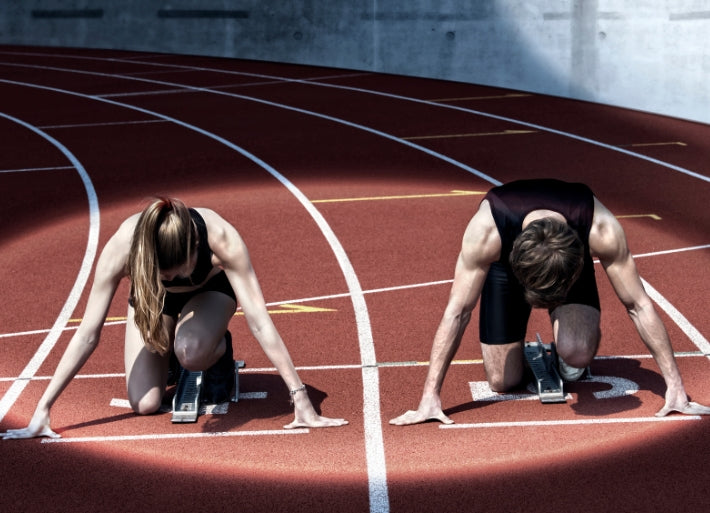
Mastering the 1000m
The final event of the heptathlon is the 1000m, an event not quite as daunting as the decathlons 1500m, but still gruelling nonetheless. Hopefully, in your training you will have done plenty of tempo work, so you know exactly the pace you need to be running. There will always be some crazed athletes who sprint off 5 seconds faster than their target time, but stay within yourself and don’t follow them around as you’ll see them again at the 500m mark when they’re going backwards.
The middle part of the race (laps 3 and 4) is the easiest to get wrong. It is easy not to notice your pace dropping as fatigue starts to build in your legs, and this is where you have to make a concerted effort to stay strong and keep your target pace. If you are fighting for positions and points come the last lap, my one piece of advice is to try not to overtake on the bends. With the indoor banked bends being sub-optimal for overtakes, you may run much further than you have to.

And now... it's time to relax!
After this race and the competition's climax, it is paramount to recover with ice, good quality sleep and plenty of calories to replenish your energy stores, which will be empty after the two days of competition.
I hope you’ve enjoyed this piece and may have gained some knowledge from it. Stay tuned for the next one!
About Harry Kendall

Harry is a decathlete who represented England at the 2022 Commonwealth Games in Birmingham, and is a member of Tonbridge AC.
He has also won bronze at the 2021 British Athletics Championship, and he claimed victory at the 2022 English National Championship after scoring a record of 7843 points!
Instagram: @harrykendall_
Twitter: @harrykendall567


Leave a comment